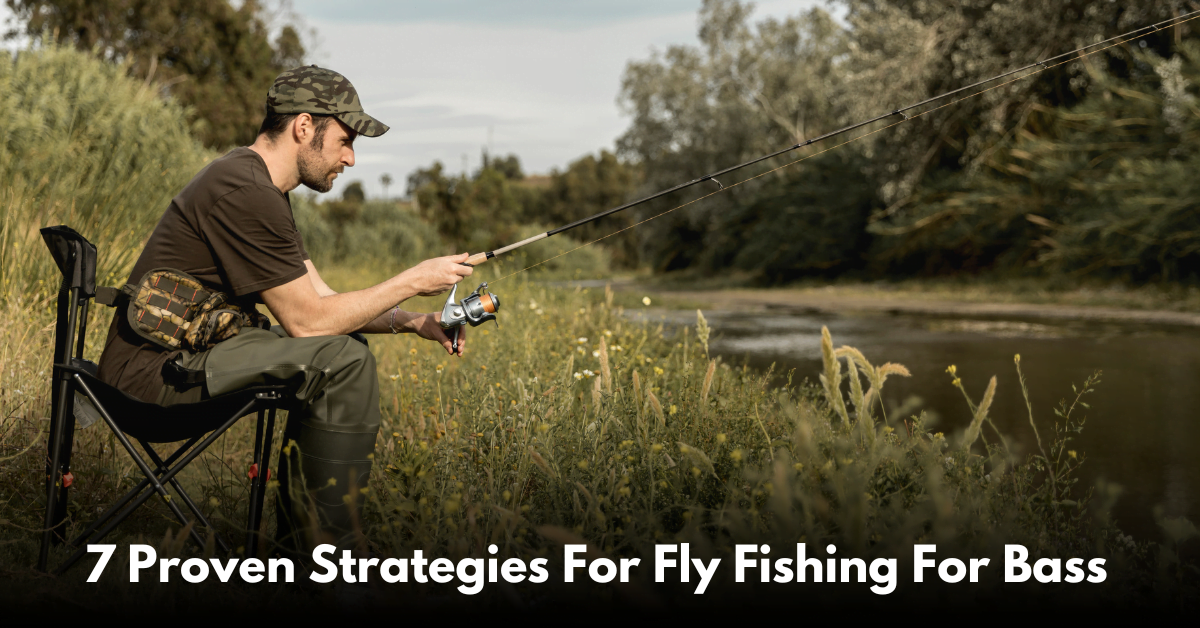Bass fly fishing has become a prevalent sport among anglers worldwide. The water sport provides the unwavering experience of top-water action and intense fights. Moreover, the fishing approach requires special techniques and equipment to catch large bass species.
It involves lightweight fly roads, artificial flies, and fly lines to entice your prey. However, the fishing strategy works best in freshwater streams, lakes, rivers, and ponds with underwater structures.
So, what do you do to boost your catch? Find out more.
1. Buy the Right Bass Flyline
Have you heard friends and relatives complain of dreadful fly-fishing experiences? Someone spent hours casting, but they yielded no positive results? They could have handled such setbacks with high-quality fly fishing for bass gear.
The best fly lines have fast-action fly rods, enabling you to deliver flies accurately.
These lines can turn over wind-resistant and bulky bass bugs, delivering flies with authority. They can accommodate multiple fishing techniques and scenarios. These lines offer premiering control and sensitivity, enabling anglers to detect strikes and make timely adjustments.
Bass fly lines can withstand the hassles of repeated casting to deliver reliable performance.
2. Keep Your Hooks Sharp
A blunt hook impacts your bass fishing expeditions. It cannot pierce the hard bass mouth, leading to lost hook sets and incorrectly hooked fish. Such errors decrease the prospect of making a successful catch. Sharp hooks penetrate better, boosting the odds of hooking and landing targeted bass.
The hook penetrates the bony structures to secure a solid hook set. The high hooking efficiency minimizes missed strikes and lost fish. Also, maintaining the hooks in prime condition elongates its life and enhances performance.
3. Bass-Fish Facing the Wind
Wind causes currents that push the baitfish toward the shore and concentrated areas. Bass fish is an opportunistic feeder and will leverage the currents to ambush the prey. Fishing against the wind positions opportunely to target and catch the bass as they feed on the baitfish. Also, fishing against the wind creates a resistance that straightens the line and offers more control over the casts.
Wind creates disturbances and ripples on the water’s surface, concealing the angler and lure. Bass fish are less wary in choppy water conditions, which allow you to strike and hit better. Windy conditions boost oxygenation for bass activity and survival. Cast in places with high oxygen levels to increase your success rates.
4. Use Quality Flies
The bass have opportunistic feeding habits. But that does not mean they fall for every prey. Using high-quality flies such as aquatic creatures, minnows, insects, crayfish, and frogs attracts the attention of bass. They mimic natural bass prey coloration, size, and shape.
Bass strikes aggressively at everything they perceive as a threat or meal. Well-crafted flies trigger that sort of aggression and might increase striking rates. Use multiple fly choices to adapt to the changing conditions and fish with purpose.
5. Time Your Bass Fishing
Bass fishing is not something you do out of the blues. It takes proper strategizing and timing for optimal success. Bass fish is more active during late evenings and early mornings. These species feed near the water surface during such times of the day.
Bass becomes sensitive to changing water temperatures during fall and spring. They move to the shallow surfaces to spawn and are more accessible to anglers. They feed more aggressively in warmer waters, and casting on such surfaces increases success rates. Tidal movements are mightier during new and full-moon phases, which increase their activities and feeding.
6. Target Deep Water
Water on deeper surfaces is thermally stable. The bass escapes the hot temperatures by seeking deeper surfaces during hot weather. Casting in deeper water connects you to more fish. Besides, Oxygen levels in deeper water areas are higher. Bass thrive in oxygen-rich water, and fishing in those areas gives access to more fish.
Many bass anglers target shallow water with visible cover. It is easier to target and catch more bass in such conditions. Deepwater experiences less bass fishing pressure than shallow water. Targeting the deep water enables you to explore less-pressured areas.
7. Be Stealthy With Your Casts
Bass are sensitive to their surroundings. They have sharp hearing and vision and can detect threats easily. They get easily provoked by unnecessary shouting, splashing, and banging. Such disturbances make the bass stop feeding and alert.
Bass fish are alert to visual disturbances and can run away. Watch your steps when approaching the fish and avoid sudden movements. Make longer casts to access distant targets without spooking base or getting close.
Practice the casting to perfect your accuracy and have the capacity to handle longer distances. Be mindful of the surroundings and watchful of other anglers.
Wrapping Up
Are you a pro angler seeking to venture into bass fishing? These strategies will prepare you to tackle the industry challenges and perfect your art.
Buy the right bass fly line, keep your hook sharp, and bass fish against the wind. Use high-quality flies and ensure you fish at the right time. Angle in deepwater and be stealthy with your angling activities. Learn the casting art and ensure you cast at the right distance.











One Comment